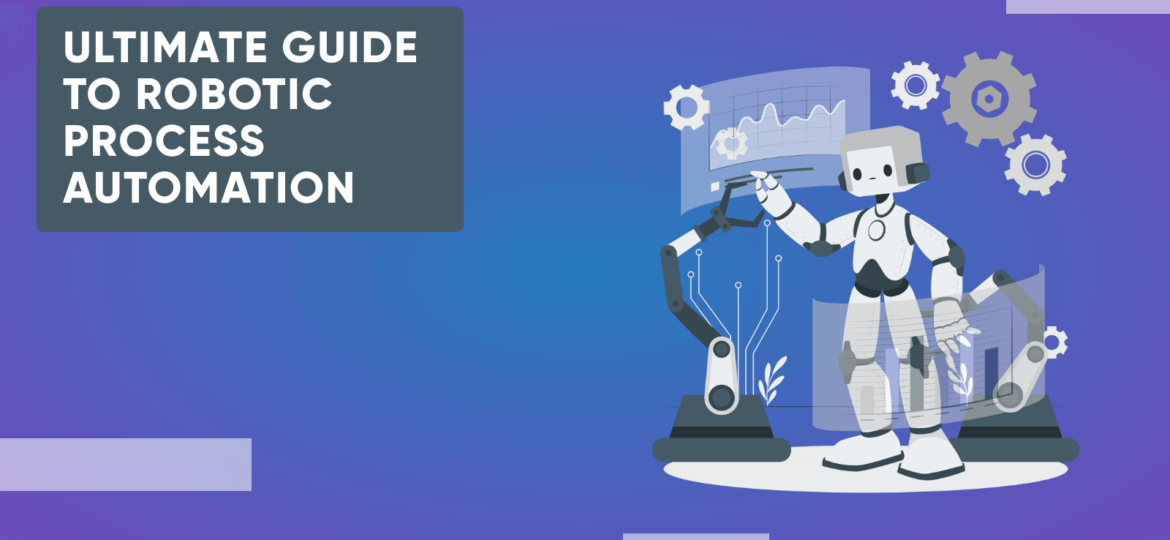In 2025, Robotic Process Automation (RPA) has become one of the most powerful technologies driving digital transformation for businesses across the USA. From automating repetitive office tasks to streamlining enterprise workflows, RPA software is helping organizations reduce costs, improve accuracy, and accelerate productivity like never before.
Today’s RPA systems go far beyond simple macros or rule-based automation — they integrate with Artificial Intelligence (AI), Machine Learning (ML), and mobile apps to perform complex, decision-based tasks across industries such as finance, healthcare, retail, logistics, and manufacturing.
Whether you’re a startup, SMB, or Fortune 500 enterprise, understanding how robotic process automation works can help you unlock scalability, agility, and innovation in 2025 and beyond.
What Is Robotic Process Automation (RPA)?
Robotic Process Automation (RPA) is a cutting-edge technology that uses software “robots” or digital workers to automate repetitive, rule-based tasks that were traditionally done by humans.
These bots can interact with computer systems, websites, and mobile apps to perform activities such as:
Processing transactions
Collecting and analyzing data
Filling out forms
Managing customer queries
Updating databases
In simple terms, RPA mimics human actions in digital systems, but with higher speed, accuracy, and scalability.
For example, a banking RPA bot can process thousands of loan applications daily, or a healthcare RPA system can automatically handle patient records — saving hours of manual work.
How Does Robotic Process Automation Work in 2025?
In 2025, RPA operates using a blend of AI-driven decision-making, machine learning models, and cloud-based automation platforms.
Here’s a breakdown of how it works:
Task Identification
Businesses identify repetitive, time-consuming processes ideal for automation.Bot Design & Development
Using RPA platforms (like UiPath, Blue Prism, or Automation Anywhere), developers build bots to execute those processes.Bot Training & Testing
Bots are trained to perform tasks using data samples and test runs.Deployment & Integration
Bots are deployed across desktop, web, and mobile applications — connecting with existing ERP, CRM, and HR systems.Monitoring & Optimization
AI-based analytics tools track bot performance, ensuring continuous improvement.
Modern RPA systems integrate seamlessly with mobile apps, Android and iOS platforms, and cloud computing services, enabling businesses to manage automation anytime, anywhere.
Why RPA Is a Game-Changer for U.S. Businesses in 2025
1. Boosts Productivity
RPA eliminates manual data entry, allowing employees to focus on strategic, creative, and high-value tasks.
2. Reduces Costs
By automating repetitive tasks, companies save thousands of dollars annually on labor and operational inefficiencies.
3. Enhances Accuracy
Automation bots minimize human errors, ensuring data accuracy in banking, healthcare, and retail industries.
4. Improves Compliance
RPA solutions automatically maintain logs and documentation, helping organizations stay compliant with U.S. data privacy and financial regulations.
5. Enables 24/7 Operations
Unlike human workers, bots can function continuously without breaks — improving turnaround times and customer satisfaction.
RPA + Artificial Intelligence (AI): The Perfect Pair
In 2025, AI-powered RPA (also called Intelligent Automation) is redefining how organizations operate.
By combining machine learning, natural language processing (NLP), and predictive analytics, RPA bots can now:
Understand and process unstructured data (emails, invoices, documents)
Learn from historical data to improve accuracy
Automate decision-making processes
Personalize customer experiences in mobile and web applications
This hybrid approach is transforming industries across the U.S., with AI-integrated mobile apps playing a major role in scaling automation across devices.
The Role of Mobile Apps in RPA in 2025
The rise of Android and iOS mobile applications has made automation accessible from anywhere.
Many RPA tools now offer mobile dashboards, allowing businesses to monitor bots, track performance, and even trigger automation tasks via mobile apps.
Popular mobile-integrated RPA use cases include:
Banking apps automating loan approvals
E-commerce apps updating inventory
Healthcare apps processing insurance claims
Logistics apps tracking real-time delivery updates
Mobile RPA solutions are a key component of digital transformation — especially for U.S. enterprises looking to modernize in 2025’s app-driven economy.
Industries Leveraging RPA in 2025
RPA has become the backbone of multiple industries in the U.S., including:
Banking & Finance: Automated KYC, fraud detection, and report generation
Healthcare: Claims processing and patient data management
Retail: Order fulfillment and inventory control
Manufacturing: Supply chain automation and production monitoring
Insurance: Policy management and claim settlements
IT & Telecom: Service desk automation and network monitoring
Government & Public Sector: License renewals and data verification
Top RPA Tools in 2025
Here are the leading RPA software platforms dominating the U.S. market in 2025:
UiPath
Automation Anywhere
Blue Prism
Kofax RPA
WorkFusion
Power Automate by Microsoft
Pega Systems
Each of these offers advanced analytics, mobile app support, and AI integration for next-gen automation management.
The Future of RPA: 2025 and Beyond
By 2030, experts predict that over 90% of businesses in the U.S. will use some form of automation.
Emerging technologies like Generative AI, cloud-native bots, and voice-controlled RPA systems are already revolutionizing workflows.
Future RPA trends include:
Hyperautomation combining AI, ML, and RPA
No-code RPA platforms for non-technical users
RPA + ChatGPT-style AI assistants
Cloud-based RPA-as-a-Service models
Integration with IoT and mobile ecosystems
Automation will continue to empower organizations to achieve efficiency, innovation, and global competitiveness.
Why Choose Echo Innovate IT for RPA Development in the USA
Echo Innovate IT is a leading RPA development company in the USA, specializing in AI-driven automation and mobile app solutions for businesses of all sizes.
Our expertise covers:
RPA app development for Android & iOS
Intelligent automation solutions
AI, ML, and NLP integration
Cloud-based automation
End-to-end deployment and maintenance
We help companies boost efficiency, improve ROI, and stay future-ready with custom RPA development services tailored for the American market.
Robotic Process Automation (RPA) might sound like a new term, but you likely interact with it in some form during your daily life. Tasks like playing songs, switching on lights, or automating repetitive actions are examples of how automation has simplified life. In the automation industry, RPA robotic process automation has emerged as a transformative technology with an ever-expanding scope.
The “robot” in robotics process automation refers to software robots that operate on physical or virtual machines. According to Aaron Bultman, Director of Product at Nintex, “What is robotic process automation? It’s a form of business process automation that allows users to define a set of instructions for bots to follow. These bots can replicate most human-computer interactions to execute tasks error-free, at high speed and volume.”
Unlike the Hollywood depiction of robots, robotic process automation RPA focuses on automating mundane, repetitive computer-based tasks. Examples include copy-pasting data, transferring files, or performing rule-based actions across applications. By automating these processes, robotic process automation software significantly boosts workplace efficiency while reducing errors.
Robotic automation process apps are designed to handle tasks with precision, shifting execution cycles from humans to bots. With minimal integration effort into existing IT architecture, RPA enables businesses to enhance speed, accuracy, and compliance while simultaneously cutting costs. As one of the hottest trends in business technology, robotic process automation automation continues to gain attention from digital leaders worldwide for its ability to streamline operations and drive innovation.
This blog will cover-
- The basics introduction of Robotic Process Automation Like What is RPA? or RPA Technology.
- Benefits of robotic process automation
- How does RPA work?
- RPA Use cases
Interested in implementing the perks of RPA in your own business or company? This blog will teach you everything you need to know. So, let’s start with the basic definition of Robotic Process Automation.
What Is Robotic Process Automation? (RPA)
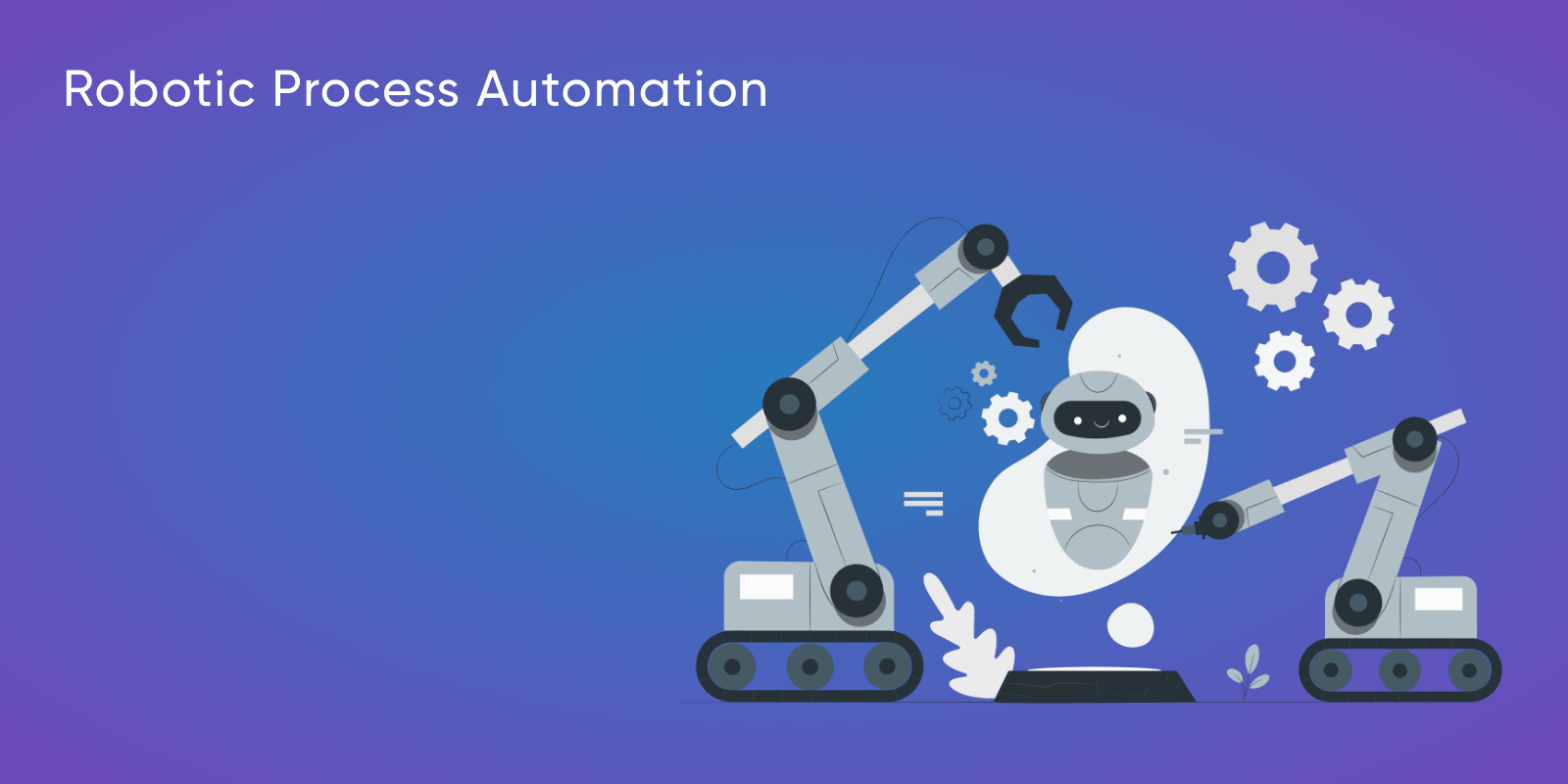
Robotic Process Automation (RPA) has revolutionized how organizations function by automating repetitive and time-consuming tasks. Robotic process automation services utilize agile software robots (or ‘bots’) capable of mimicking human actions to execute rule-based tasks with precision and efficiency. This innovative technology significantly reduces the burden on human employees, freeing them to focus on higher-value work.
In simple terms, robotic automation process combines automation, computer vision, and artificial intelligence to perform high-volume, trigger-driven tasks. As David Landreman, CPO of Olive, explains, “Robotic process automation is the process where software bots replicate human actions for repetitive tasks.” Similarly, Vishnu KC, senior software analyst at ClaySys Technologies, adds, “Robot process automation simplifies mundane tasks by replicating logical human workflows.”
RPA creates scalable and efficient digital workflows by assigning repetitive tasks to bots, which ensures higher accuracy and faster processing. According to Antony Edwards, COO at Eggplant, RPA software is programmed to perform repetitive tasks across applications and systems, enabling seamless automation of workflows. Businesses leveraging automated robotic processing can benefit from greater operational efficiency and reduced errors, making it one of the most sought-after technologies today.
The benefits of robotic process automation extend beyond efficiency. By deploying bots, businesses can quickly integrate and process data across enterprise applications, achieving unparalleled scalability and flexibility. With RPA, organizations can build robust automation strategies that align with their goals while maximizing productivity and accuracy.
How does RPA work?
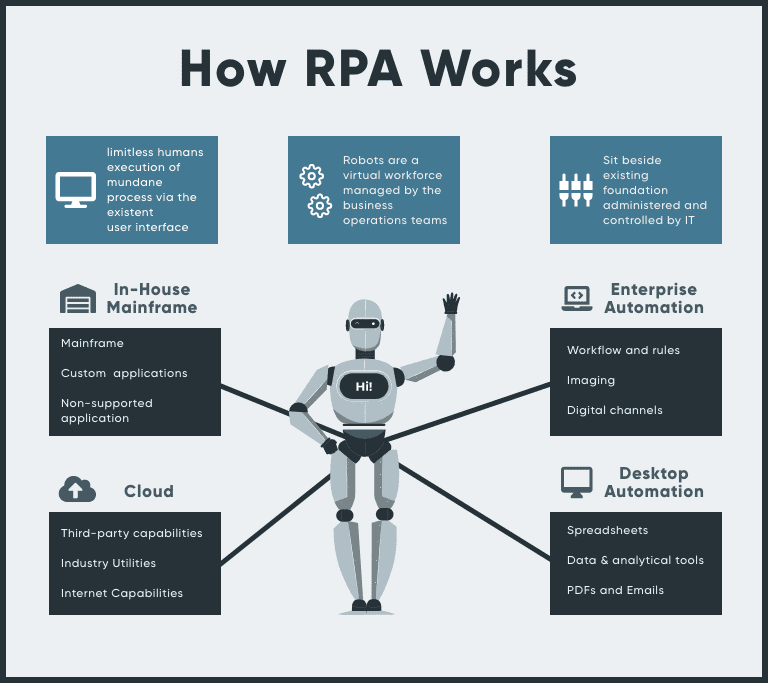
- Process library, controller dashboard, and a pool of bots are the pieces that complete the typical architecture for robotic process automation.
- All the routines and scripts that users define, the process library holds it.
- RPA platform’s dedicated scripting language and interacting with their computer user interface directly are the two options by which users can define routine.
- Decisions with if/then/else statements that depend on structured data are a part of automated routines.
- Users can assign routines to bots, either on a fixed schedule or ad hoc using the controller dashboard which is also the user interface for the Robotic Process Automation platform.
- For automating business processes, RPA bots can efficiently run on a local machine or on a virtual machine in the cloud.
- Cloud computing stores data residing in machines involving participants because of a traditional database structure. But blockchain is a tamper-free and reliable online database registry of various digital transactions. Where alteration of data is possible by participants after taking approval from each party involved in it.
- The controller dashboard is responsible for virtual RPA deployments which directs the allocation of RPA bots to particular virtual machines in the cloud.
- For RPA bots to execute their programming intelligent automation routines, these virtual machines offer the processing power, memory, and data storage.
What Are The Key Benefits Of Robotic Process Automation?
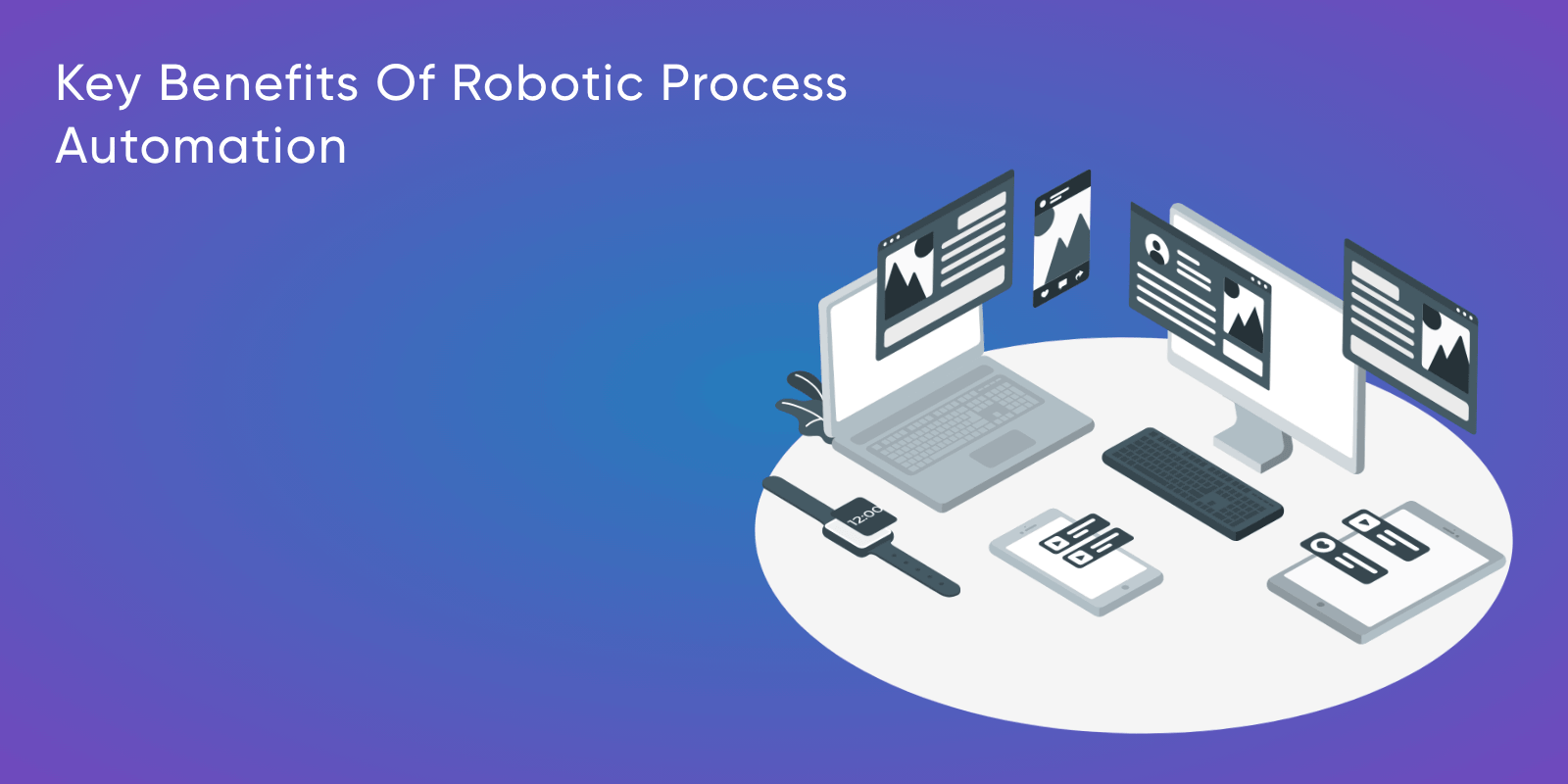
With the reduction in costly investments in new applications or systems, Robotic Process Automation is designed in such a way that it has the ability to boost productivity, improve accuracy, and will aid your business to expand by handing repetitive, manual workloads to software robots. Here are some of the benefits of RPA software, let’s have a look at them:
Mimic Manual Tasks
Mimic the manual tasks and free up your human workforce for a well-thought-out plan that will add value to your business.
Automate Integrations
The Central Automation platform helps to automate the integrations between existing systems, applications, and workflow without making expensive hardware changes or software development.
Scale Your Digital Workforce
Software robots are fast to design and bots work along with human employees to expand growth which will scale your digital workforce cost-effectively.
Enable Innovation & Collaboration
Centralizing automation and connecting data with detailed analytics will encourage innovation between IT and business teams.
The Major Industries Adopting Robotic Process Automation Solutions
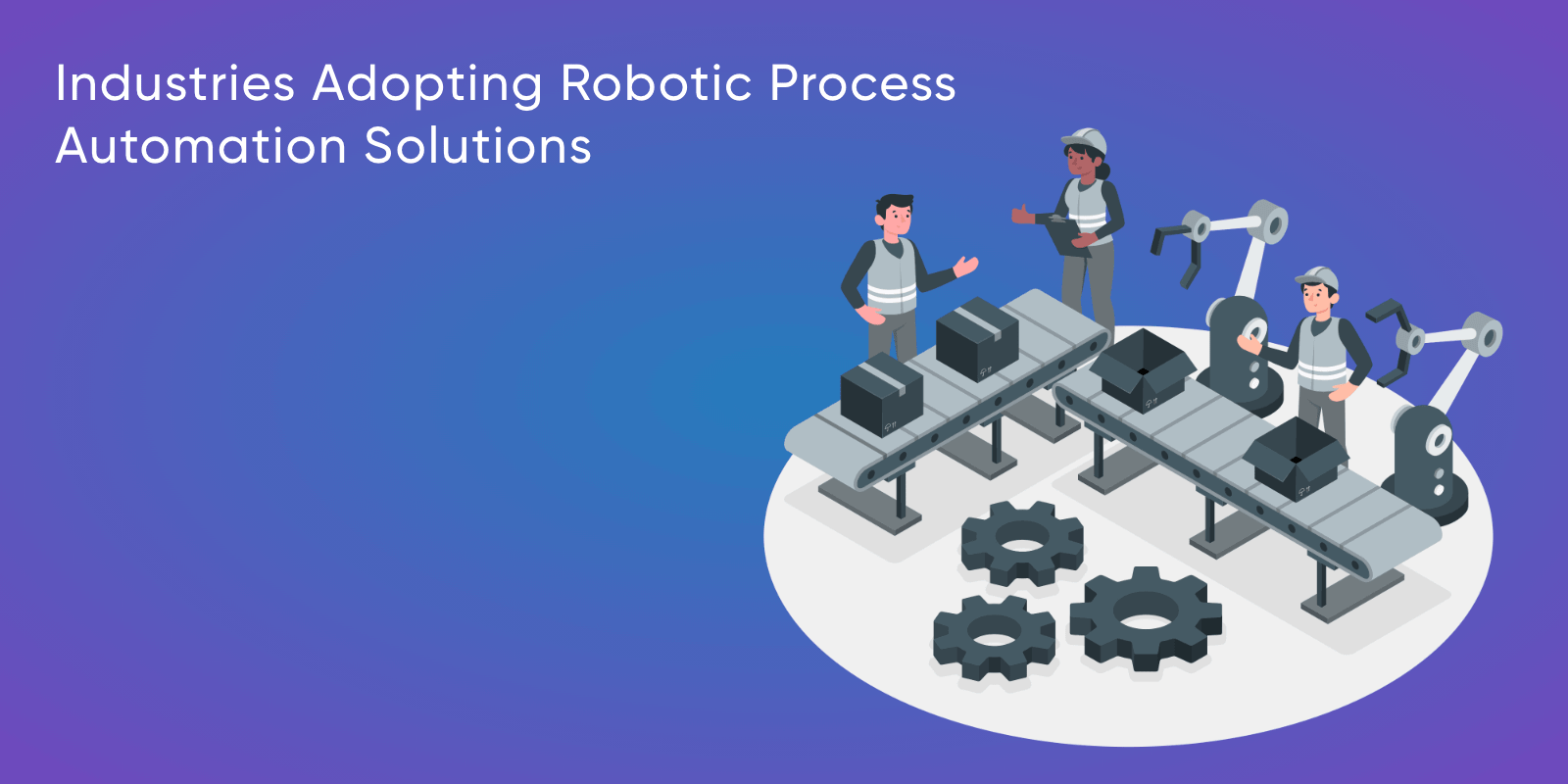
There are numerous industries that are utilizing RPA technology to expand their business operations.
We have come across several industries that are leveraging this tremendous technology. Let’s have a look at some of the industries that have implemented RPA:
Banking and Financial Services
According to the report by Forrester “it is expected that by the year 2023, the RPA services market will hit $12 Billion.” Also, finance and accounting space cover 36% of all use cases.
It is quite surprising to notice the banking’s early adoption of automation as there are more bots available today in the financial industry. Nowadays, RPA automation solutions are utilized by several major banks to automate tasks like account opening, customer research, inquiry processing, etc. Banks use numerous bots for the automation of manual high-volume data entry.
Retail
RPA has become an integral part of the modern retail industry because of the rise of eCommerce which has improved overall office operations and customer experience. Customer relationship management, customer feedback processing, and fraud detection, warehouse and order management are part of the well-known applications.
Healthcare
The prime components in the healthcare industry are accuracy and compliance. Robotic Process Automation software is used by some of the world’s largest hospitals for optimization of information management, insurance claim processing and payment cycles, prescription management, etc.
Summing it up!
Robotic Process Automation (RPA) is rapidly transforming industries by automating repetitive and rule-based tasks. To put it simply, RPA robotic process automation is a cutting-edge automation technology that leverages software tools to minimize the need for human intervention in manual and monotonous tasks. By mimicking human actions, robotics process automation enables businesses to perform high-volume tasks efficiently and accurately.
From copying human activities to streamlining workflows, managing products, and effortlessly completing repetitive duties, robotic process automation RPA offers a wide range of applications. Its ability to handle rule-driven processes with ease makes it an invaluable tool for businesses aiming to enhance productivity and reduce operational costs.
If you’re wondering, “What is robotic process automation?”—this blog clarifies how robotic process automation automation is reshaping workflows and boosting efficiency across industries.
FAQs of Robotic Process Automation
What can Robotic Process Automation do?
RPA can mimic human interaction and automatically perform any task using a computer. Be it copy-pasting data from one place to another, or performing advanced series or repeatable and predictable actions.
What is BOT in robotic process automation?
A BOT is a software that can perform predefined automation. BOTs can run 24X7.
Where is the use of RPA?
There is no real limit of RPA’s use within a business. However, typically RPA is used for high volume data-driven transactional tasks such as finance processes (invoice processing, Accounts payable, credit control, etc.) or the amalgamation of data sources.
Will our data be safe?
Yes, your data is 100% safe & secure and only your chosen people from your own organization have access to your data. Apart from this, your data is in an encrypted format. Also, when it is stored in databases as well as during transit between the server and your machine. To make sure, multiple security audits and reviews are helpful.
